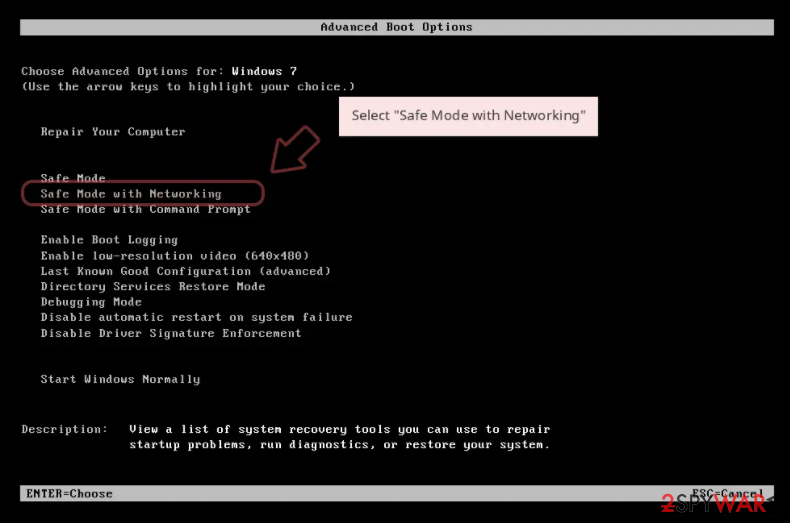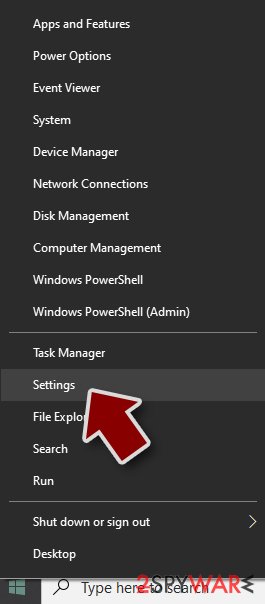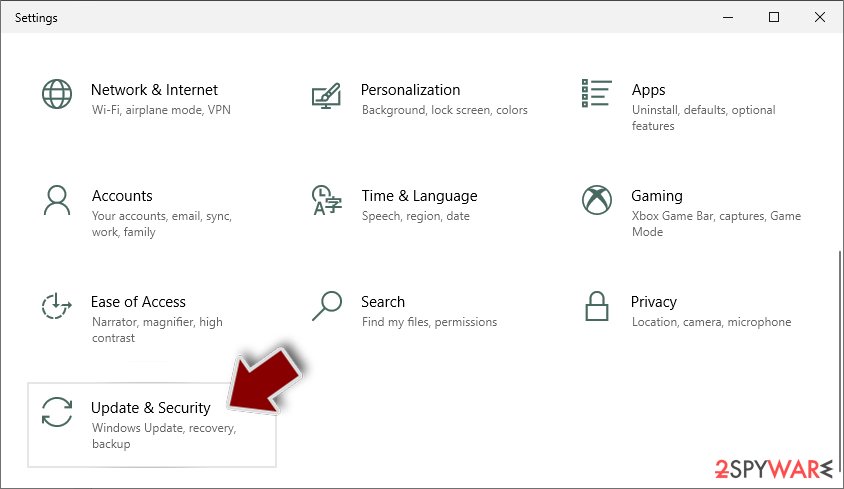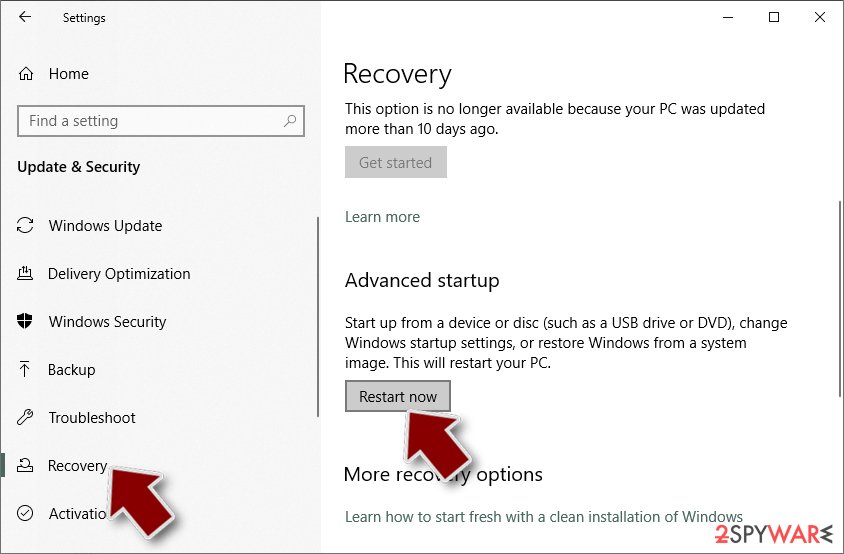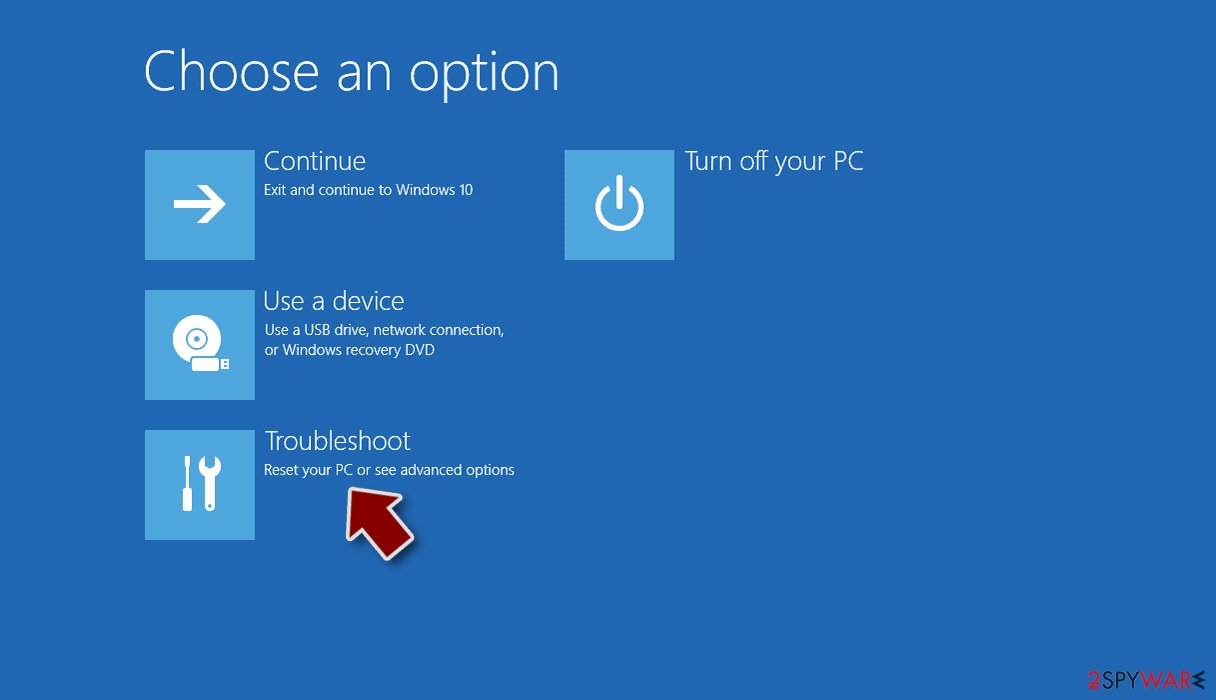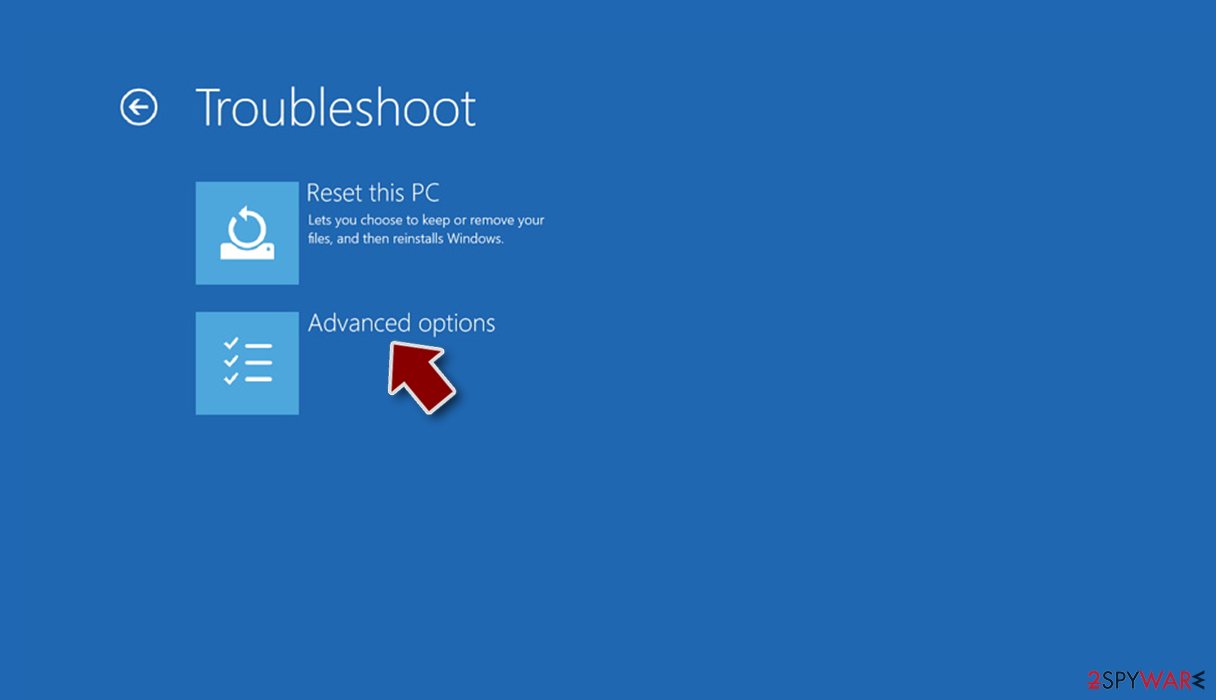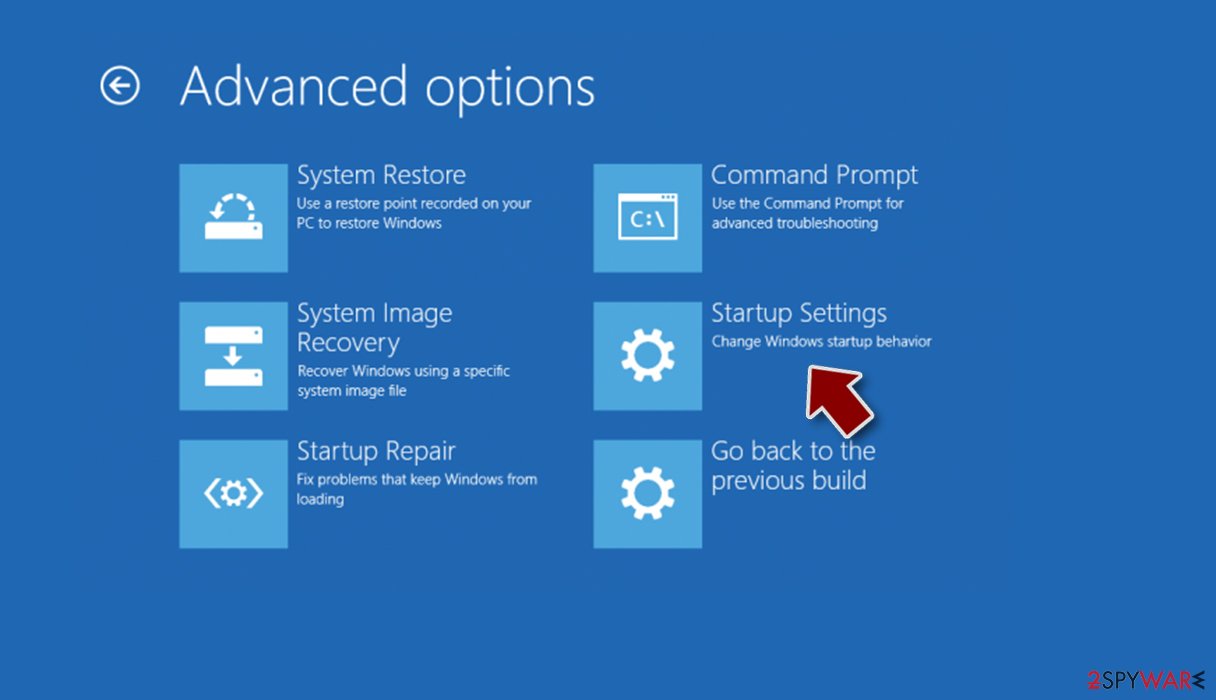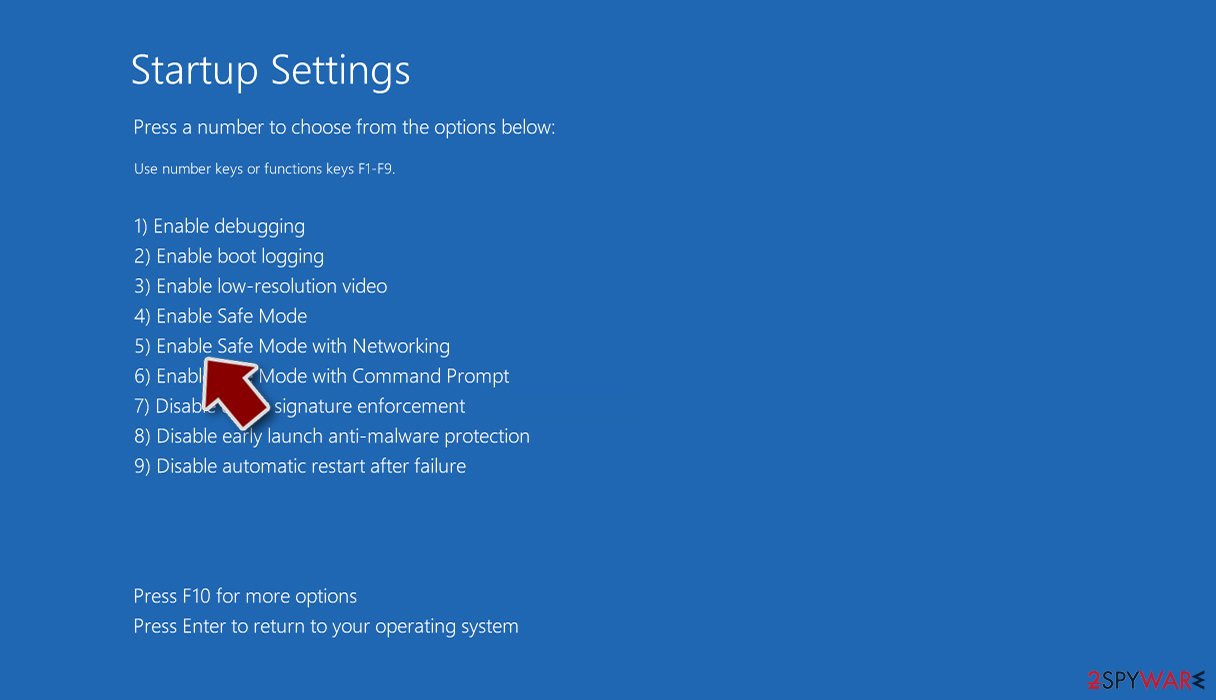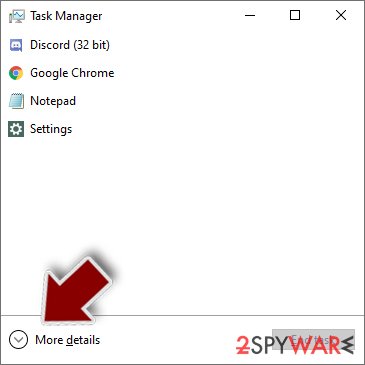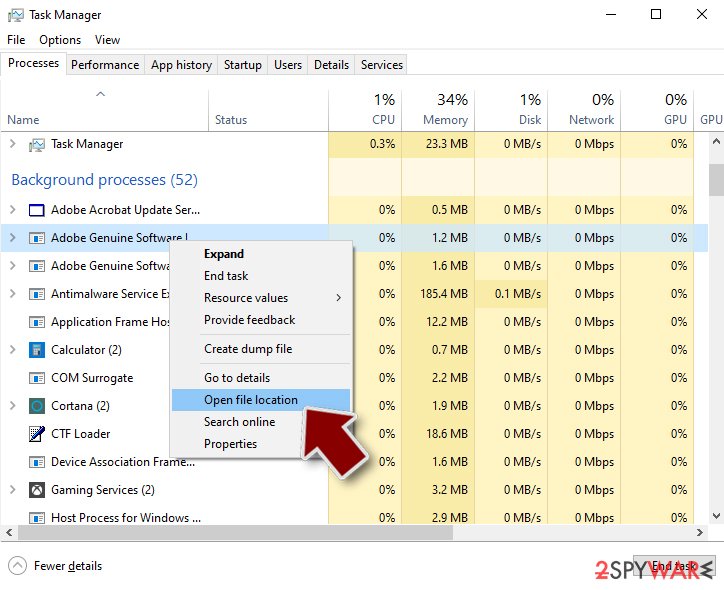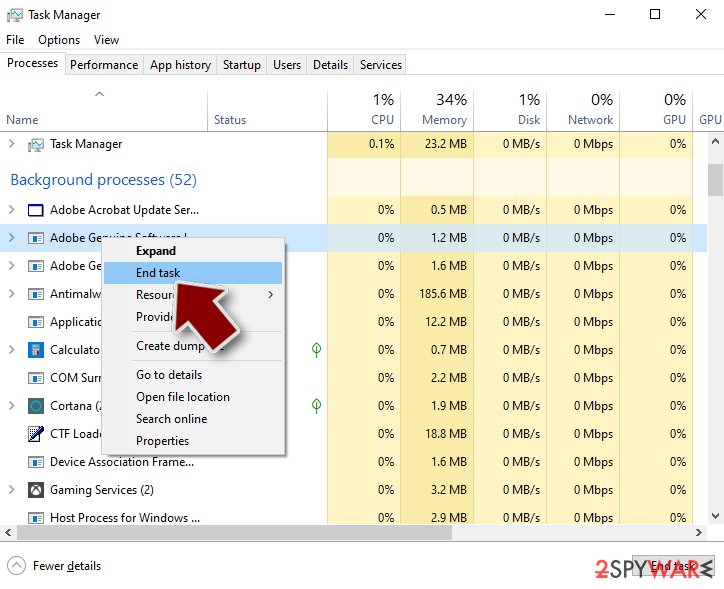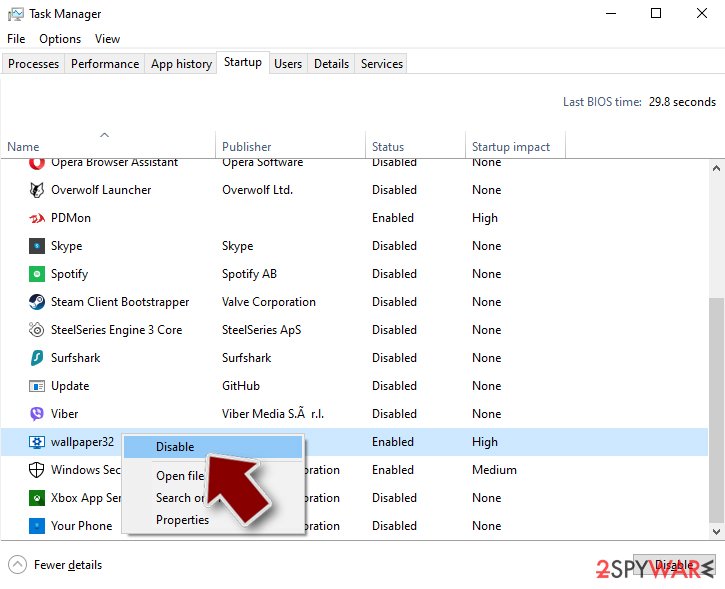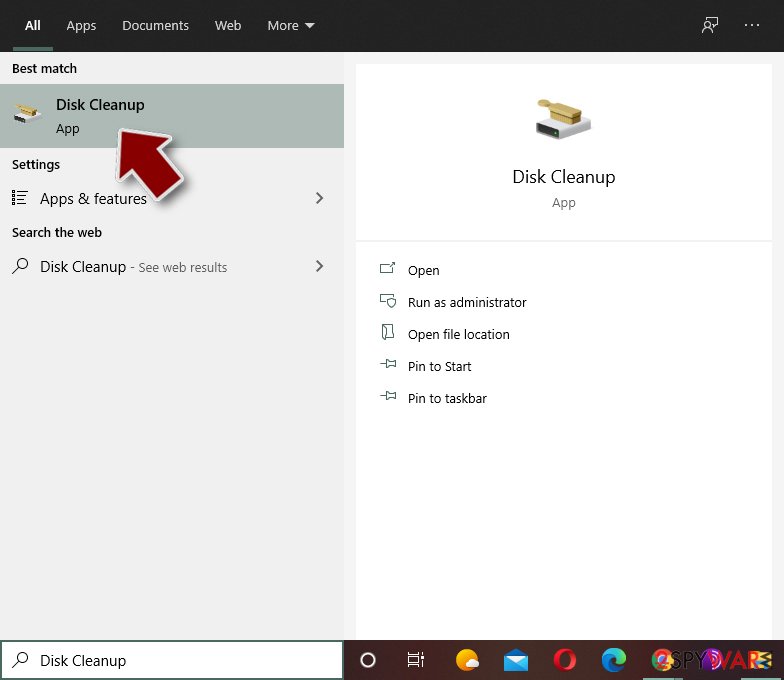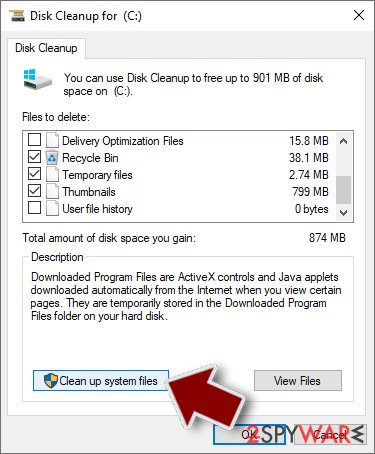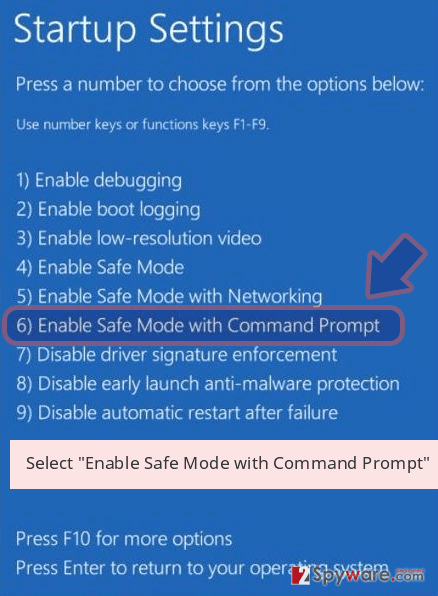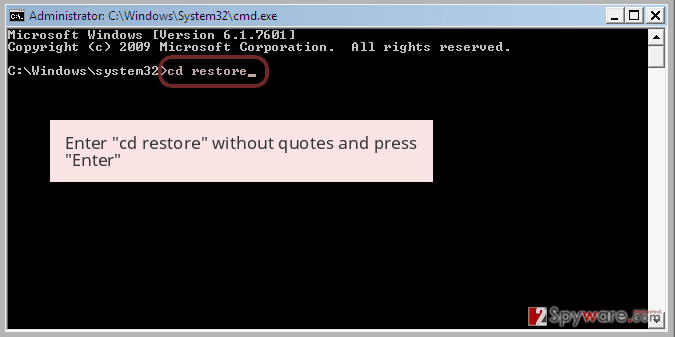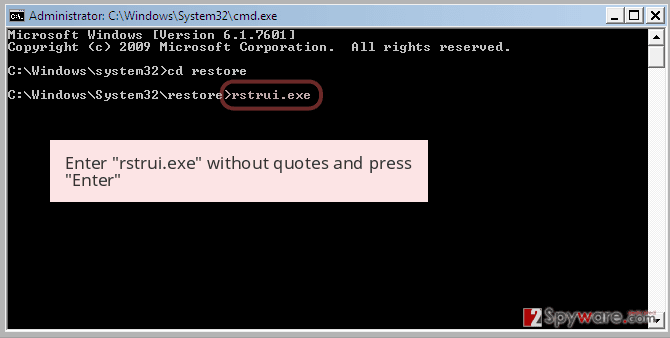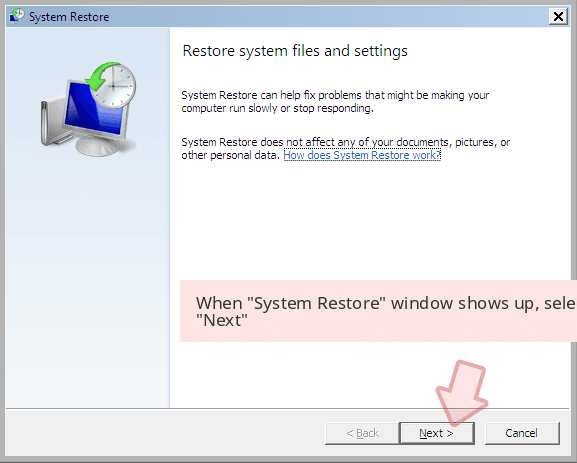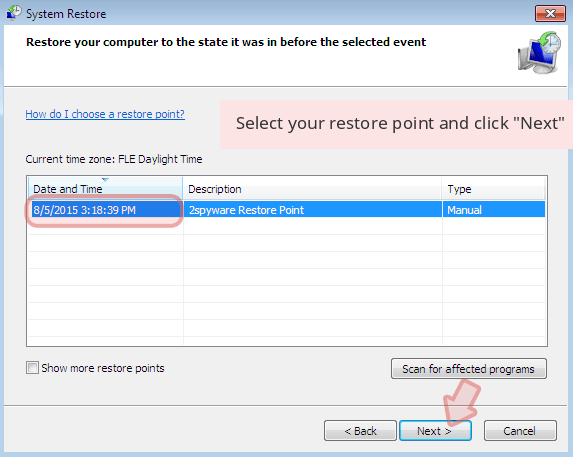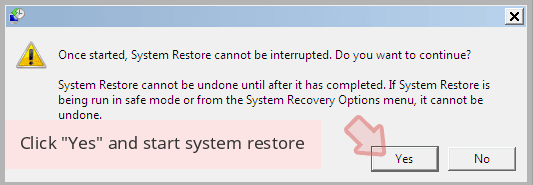One ransomware / virus (Removal Guide) - Decryption Methods Included
One virus Removal Guide
What is One ransomware virus?
Things to known about recently discovered One ransomware virus
One ransomware has been recently spotted attacking computer users. Cyber criminals usually spread malicious payload via misleading emails. When people opens an infected email attachment, the virus is installed and executed on the computer. This cyber infection is designed to camouflage itself as legitimate system processes, such as svchost.exe[1] or Chrome.exe.[2] For this reason, it can stay on the system undetected for a while and perform its nasty tasks. There’s no doubt that the primary function of the One virus is to encrypt files. As soon as it gets inside, it starts scanning the system. There’s no doubt that it is looking for the data for the encryption. Just like many other similar cyber threats, this one also aims at the most popular files such as MS Office documents, various multimedia files, databases, archives, and much more widely used data. To all corrupted files it adds .one file extension. Sadly, there’s not much what you can do with documents, pictures and other records encrypted by One malware. Although if you have data backups, meeting this crypto-malware does not cause you much damage.[3] Otherwise, you are in an unpleasant situation.
The creators of the One virus gives victims short instructions what they need to do with encrypted files in the ransom note called Recupere seus arquivos aqui.txt. This text file is dropped on the system as soon as data encryption is other. The ransom demanding message is written in the Portuguese language. Thus, Portuguese-speaking computer users are in the target eye of the ransomware. In the ransom note, victims find their unique ID and are asked to send it to the provided email address. Within 24 hours, they are supposed to receive and email with the necessary decryption key. However, you should not contact cyber criminals because they won’t provide decryption software for free. First of all, hackers will tell you how much Bitcoins their decryption software costs.[4] Then, they might use blackmailing or psychologic terror tactics to persuade you to pay the ransom. Lastly, you may not receive the promised software. Thus, instead of having a discussion with criminals, you should focus on One removal. Ransomware elimination is performed using malware removal tools such as FortectIntego or SpyHunter 5Combo Cleaner. However, the virus might be designed to block access to the security programs. In this case, take a look at the instructions below. They will help you to deal with obstacles and remove One from the system.
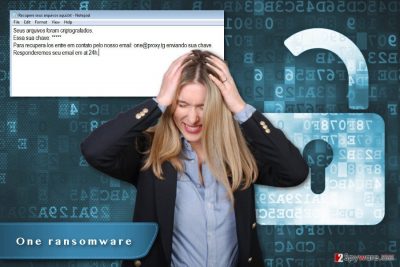
What techniques are used for ransomware distribution?
Just like the majority of other crypto-malware lurking on the web, One ransomware also is distributed with a help of malicious email attachments. Thus, the dangerous payload might be delivered straight to your inbox as an obfuscated file. The email might inform about a necessity to verify some details in the attached invoice or another important document. Crooks can pretend to be from various organizations and find numerous reasons to motivate you to open the attachment. What is more, One hijack might also occur if you click on an infected link sent in the email or social media. Thus, before clicking on unknown attachments and strange links, make sure that it’s actually safe to open. Developers of the ransomware also successfully use malvertising as another distribution method. Malware-laden ads might be placed even on legitimate and well-known websites. Thus, clicking on online ads has never been as dangerous as it is now.[5]
One ransomware removal instructions
If you think about manual One removal, you should get rid of this idea immediately! You are dealing with a serious cyber infection that might be hiding malicious files and running dangerous processes deeply in the system. What is more, the virus might use legitimate system names; so, you can unintentionally delete the wrong file. Deleting crucial system files might lead to the huge damage. In order to protect your computer and remove One virus safely, you need to use professional malware removal tools, such as FortectIntego or SpyHunter 5Combo Cleaner. Run a full system scan with one of these programs. However, if you cannot access security tools, please follow our instructions below.
Getting rid of One virus. Follow these steps
Manual removal using Safe Mode
If you cannot perform automatic One ransomware removal, reboot your computer to the Safe Mode with Networking as shown below. This method allows disabling the virus and running malware removal program.
Important! →
Manual removal guide might be too complicated for regular computer users. It requires advanced IT knowledge to be performed correctly (if vital system files are removed or damaged, it might result in full Windows compromise), and it also might take hours to complete. Therefore, we highly advise using the automatic method provided above instead.
Step 1. Access Safe Mode with Networking
Manual malware removal should be best performed in the Safe Mode environment.
Windows 7 / Vista / XP
- Click Start > Shutdown > Restart > OK.
- When your computer becomes active, start pressing F8 button (if that does not work, try F2, F12, Del, etc. – it all depends on your motherboard model) multiple times until you see the Advanced Boot Options window.
- Select Safe Mode with Networking from the list.

Windows 10 / Windows 8
- Right-click on Start button and select Settings.

- Scroll down to pick Update & Security.

- On the left side of the window, pick Recovery.
- Now scroll down to find Advanced Startup section.
- Click Restart now.

- Select Troubleshoot.

- Go to Advanced options.

- Select Startup Settings.

- Press Restart.
- Now press 5 or click 5) Enable Safe Mode with Networking.

Step 2. Shut down suspicious processes
Windows Task Manager is a useful tool that shows all the processes running in the background. If malware is running a process, you need to shut it down:
- Press Ctrl + Shift + Esc on your keyboard to open Windows Task Manager.
- Click on More details.

- Scroll down to Background processes section, and look for anything suspicious.
- Right-click and select Open file location.

- Go back to the process, right-click and pick End Task.

- Delete the contents of the malicious folder.
Step 3. Check program Startup
- Press Ctrl + Shift + Esc on your keyboard to open Windows Task Manager.
- Go to Startup tab.
- Right-click on the suspicious program and pick Disable.

Step 4. Delete virus files
Malware-related files can be found in various places within your computer. Here are instructions that could help you find them:
- Type in Disk Cleanup in Windows search and press Enter.

- Select the drive you want to clean (C: is your main drive by default and is likely to be the one that has malicious files in).
- Scroll through the Files to delete list and select the following:
Temporary Internet Files
Downloads
Recycle Bin
Temporary files - Pick Clean up system files.

- You can also look for other malicious files hidden in the following folders (type these entries in Windows Search and press Enter):
%AppData%
%LocalAppData%
%ProgramData%
%WinDir%
After you are finished, reboot the PC in normal mode.
Remove One using System Restore
System Restore method also helps to disable the virus in order to run a system scan with malware removal software.
-
Step 1: Reboot your computer to Safe Mode with Command Prompt
Windows 7 / Vista / XP- Click Start → Shutdown → Restart → OK.
- When your computer becomes active, start pressing F8 multiple times until you see the Advanced Boot Options window.
-
Select Command Prompt from the list

Windows 10 / Windows 8- Press the Power button at the Windows login screen. Now press and hold Shift, which is on your keyboard, and click Restart..
- Now select Troubleshoot → Advanced options → Startup Settings and finally press Restart.
-
Once your computer becomes active, select Enable Safe Mode with Command Prompt in Startup Settings window.

-
Step 2: Restore your system files and settings
-
Once the Command Prompt window shows up, enter cd restore and click Enter.

-
Now type rstrui.exe and press Enter again..

-
When a new window shows up, click Next and select your restore point that is prior the infiltration of One. After doing that, click Next.


-
Now click Yes to start system restore.

-
Once the Command Prompt window shows up, enter cd restore and click Enter.
Bonus: Recover your data
Guide which is presented above is supposed to help you remove One from your computer. To recover your encrypted files, we recommend using a detailed guide prepared by 2-spyware.com security experts.After ransomware attack data backups are crucial, especially if the official decryption software is not released. Below you will find three alternative methods that might help you to restore files encrypted by One malware. However, we cannot assure that they will be effective and retrieve all your data. Though, it’s still worth giving a try.
If your files are encrypted by One, you can use several methods to restore them:
Data Recovery Pro for restoring files encrypted by One ransomware virus
Data Recovery Pro might be useful in data recovery if you do not have backups. This tool is designed to restore various damaged files. Thus, it might help you as well.
- Download Data Recovery Pro;
- Follow the steps of Data Recovery Setup and install the program on your computer;
- Launch it and scan your computer for files encrypted by One ransomware;
- Restore them.
Windows Previous Versions feature allows restoring files encrypted by One virus
If System Restore function has been activated before ransomware attack, this method will let you copying previously saved versions of the encrypted files. Windows Previous Versions feature allows traveling back in computer’s time. Thus, it’s a great option to restore the most important documents.
- Find an encrypted file you need to restore and right-click on it;
- Select “Properties” and go to “Previous versions” tab;
- Here, check each of available copies of the file in “Folder versions”. You should select the version you want to recover and click “Restore”.
ShadowExplorer might help to restore files encrypted by One ransomware
Ransomware viruses tend to delete Shadow Volume Copies of the targeted files. However, sometimes malware fails to do that or keep these files untouched. Thus, ShadowExplorer can help you to retrieve lost data.
- Download Shadow Explorer (http://shadowexplorer.com/);
- Follow a Shadow Explorer Setup Wizard and install this application on your computer;
- Launch the program and go through the drop down menu on the top left corner to select the disk of your encrypted data. Check what folders are there;
- Right-click on the folder you want to restore and select “Export”. You can also select where you want it to be stored.
One decryptor
We are sorry, but decryption software for One ransomware is not released yet.
Finally, you should always think about the protection of crypto-ransomwares. In order to protect your computer from One and other ransomwares, use a reputable anti-spyware, such as FortectIntego, SpyHunter 5Combo Cleaner or Malwarebytes
How to prevent from getting ransomware
Stream videos without limitations, no matter where you are
There are multiple parties that could find out almost anything about you by checking your online activity. While this is highly unlikely, advertisers and tech companies are constantly tracking you online. The first step to privacy should be a secure browser that focuses on tracker reduction to a minimum.
Even if you employ a secure browser, you will not be able to access websites that are restricted due to local government laws or other reasons. In other words, you may not be able to stream Disney+ or US-based Netflix in some countries. To bypass these restrictions, you can employ a powerful Private Internet Access VPN, which provides dedicated servers for torrenting and streaming, not slowing you down in the process.
Data backups are important – recover your lost files
Ransomware is one of the biggest threats to personal data. Once it is executed on a machine, it launches a sophisticated encryption algorithm that locks all your files, although it does not destroy them. The most common misconception is that anti-malware software can return files to their previous states. This is not true, however, and data remains locked after the malicious payload is deleted.
While regular data backups are the only secure method to recover your files after a ransomware attack, tools such as Data Recovery Pro can also be effective and restore at least some of your lost data.
- ^ svchost.exe. Wikipedia. The free encyclopedia.
- ^ What is chrome.exe?. Windows 10,8,7,XP fiel forum. Information and discussion about almost every Windows 10,8,7,XP file, task, problem or error.
- ^ Ransomware threat highlights why backing up data is essential. WeLiveSecurity. News, views, and insight from the ESET security community.
- ^ Hackers want to hold your data for ransom: Here’s how to stop them. MSN. Hotmail, Outlook, Skype, Bing, Latest News, Photos & Videos.
- ^ Kimberly Pierceall. More cyber attacks to fear: malvertising and viruses that lurk unseen. The Virginian Pilot. Hampton Roads area newspaper.
